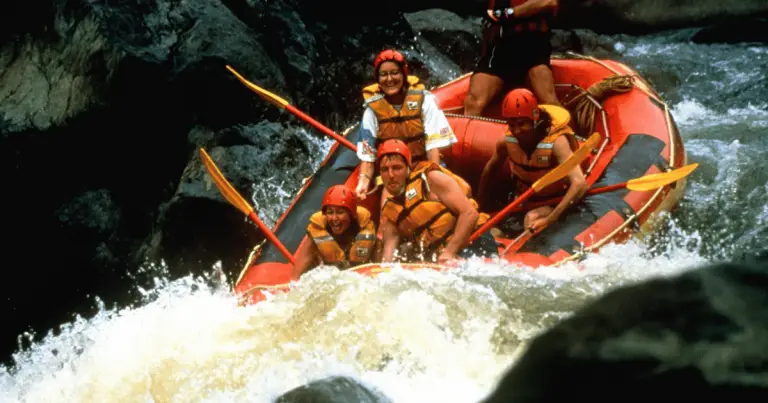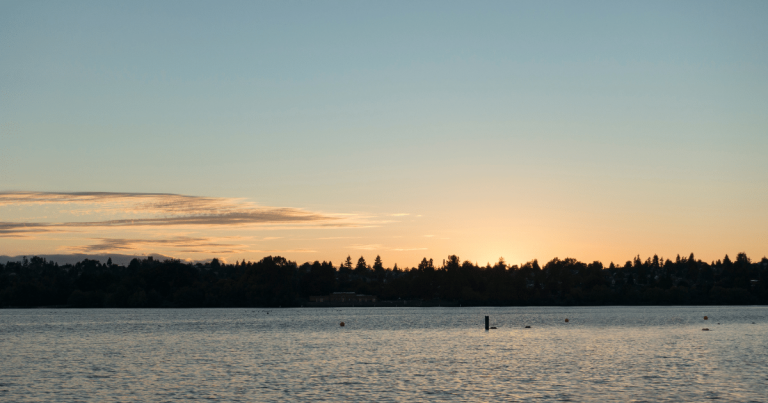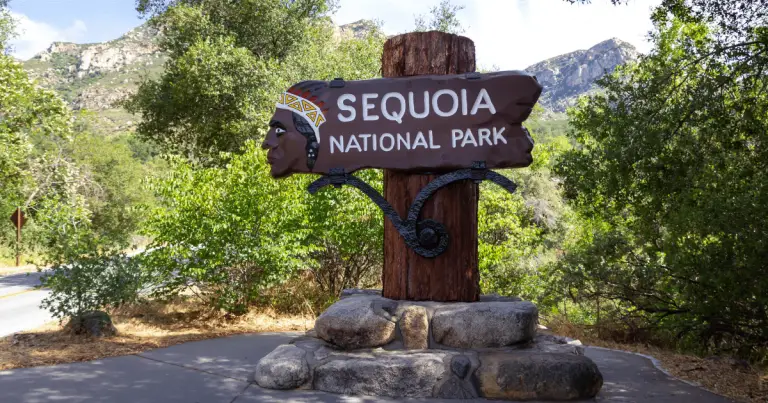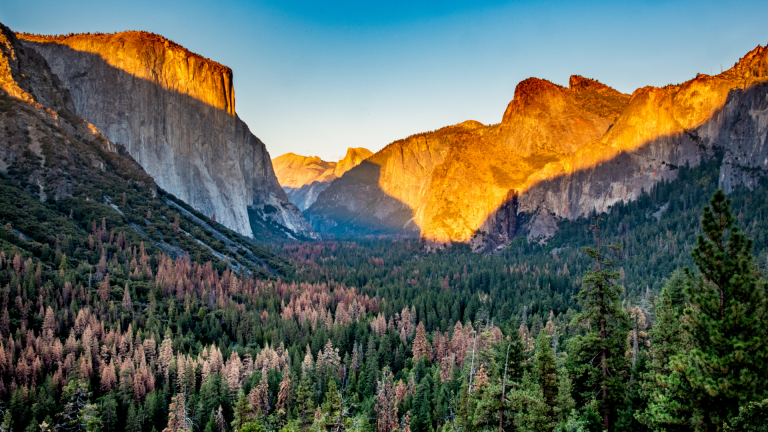Exploring the Beauty of Kings Canyon Waterfall
Have you ever witnessed the beauty of a waterfall up close? If not, then Kings Canyon Waterfall should be your next destination. This majestic waterfall is in Kings Canyon National Park, California, and is a sight. Its cascading waterfalls and the picturesque landscape make it a must-see destination.
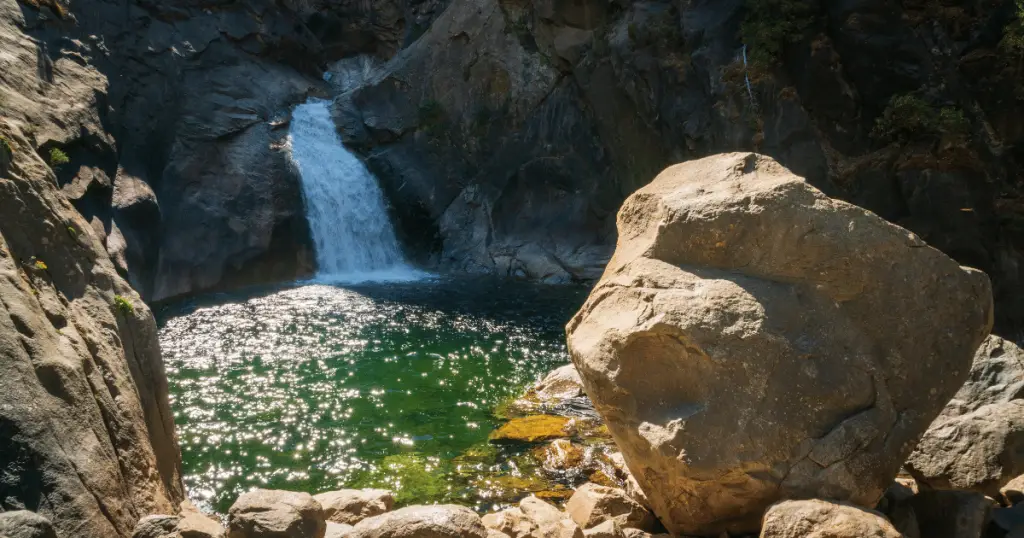
Location and Geography of Kings Canyon Waterfall
Let’s start with some background information on Kings Canyon Waterfall. This waterfall is located in the Sierra Nevada mountain range, and it’s a part of the Kings River watershed. It’s made up of three tiers of waterfalls, with the uppermost tier featuring a 40-foot drop. All three tiers combine to create a breathtaking view that is not to be missed.
The waterfall is situated at an elevation of approximately 6,000 feet. The terrain leading to the waterfall is rugged and steep, a trait typical of the High Sierras. This dramatic change in topography allows the Kings River to gain momentum, resulting in the spectacular multi-tiered waterfall that visitors travel far and wide to see. The immense height and sharp descent of the terrain contribute to the waterfall’s high velocity and breathtaking spray, making it a central attraction of the park.
Features of Kings Canyon Waterfall
Kings Canyon Waterfall is a breathtaking spectacle of nature’s raw power and beauty. The waterfall is a significant feature of the park, with a total height of approximately 100 feet when all three tiers are combined.
The uppermost tier boasts a 40-foot drop alone. The water’s flow is robust and steady throughout the year, thanks to the reliable water source from the Kings River watershed.
The waterfall showcases some unique geological features as well. The falls plunge over a sheer cliff of granite, a common rock type in the Sierra Nevada range. Eons of weathering and erosion have sculpted this cliff into an awe-inspiring natural monument.
The source of this cascading beauty is primarily snowmelt from the high peaks of the Sierra Nevada. During the peak of summer, the snowpack in the mountains begins to melt, leading to a surge in the waterfall’s flow. This cycle of snowfall and melt creates a dynamic and ever-changing scene at Kings Canyon Waterfall, with the water’s power and volume fluctuating with the seasons. This fluidity adds to the waterfall’s allure, drawing visitors back time and time again to witness the varying displays of its natural grandeur.
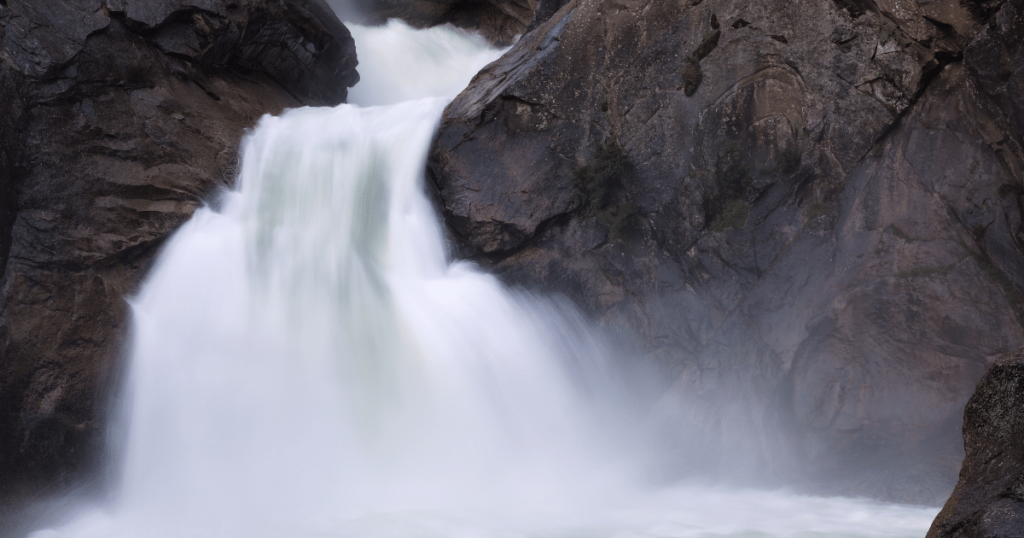
Activities and Hiking Trails
For those who enjoy hiking, Kings Canyon National Park offers several trails that promise captivating views of the waterfall. The Mist Falls Trail, a nearly 9-mile trek, brings hikers close to the waterfall’s base, offering a refreshing misty experience. Bubbs Creek Trail is another excellent choice, with parts of the trail running parallel to the river, providing hikers with stunning views of the cascading waters.
Beyond hiking, there are a plethora of other activities to enjoy in the park. Camping sites are abundant, allowing visitors to immerse themselves in the wilderness overnight. The park’s picnic areas are perfectly situated for family outings, with the sound of the waterfall providing a soothing natural soundtrack. Bird-watchers can also have a field day in the park, spotting diverse species such as the Mountain Chickadee, the Western Tanager, and the Clark’s Nutcracker.
To enhance visitor experience and knowledge, the park offers ranger-led programs and guided tours. One such program, the Waterfall Walk, offers a 1-mile stroll with a ranger who explains the waterfall’s geology, ecology, and history.
Photography and Artistic Inspiration at Kings Canyon Waterfall
Capturing the majesty of Kings Canyon Waterfall through photography requires a blend of technique and creativity. Utilize a slow shutter speed to create a silky effect with the cascading waters, and try shooting at different times of the day to play with the natural lighting.
Early morning and late afternoon offer exceptional ‘golden hour’ lighting conditions that can add warmth and depth to your photos.For a unique perspective, consider taking a close-up shot of the granite rock formation, or capture a long-exposure photo of the swirling water pool at the waterfall’s base.
A wide-angle lens will allow you to incorporate the surrounding landscape for context, and a tripod will ensure crisp, clear photos despite the longer exposure times.
Kings Canyon Waterfall has been an enduring source of inspiration for artists and writers for generations. The waterfall’s grandeur, coupled with the serene beauty of its surroundings, has been captured in countless paintings, sketches, and prose.
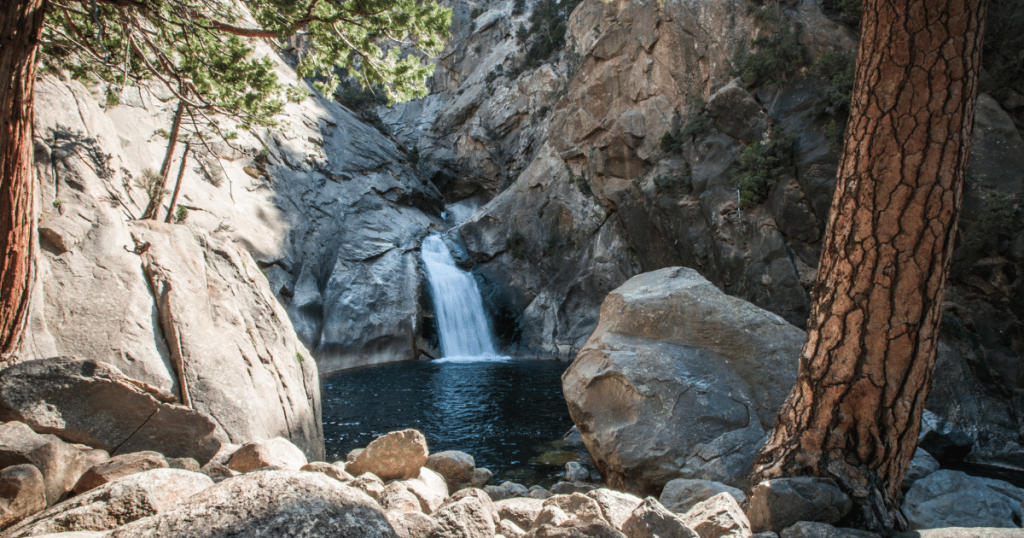
Artists often find the waterfall’s dynamic nature, changing with the seasons from a robust cascade to a gentle trickle, to be a compelling subject for their work.
For those interested in sketching or painting the waterfall, consider using watercolors to capture the nuances of the waterfall’s movement and the subtle play of light on the water’s surface. Pay attention to the contrast between the waterfall’s powerful rush and the stillness of the surrounding forest – this duality can make for a captivating artwork.
Flora and Fauna at Kings Canyon Waterfall
Kings Canyon Waterfall is nestled within a biodiverse ecosystem, teeming with various flora and fauna that contribute to the enchanting aura of the area. The verdant forest surrounding the falls is primarily composed of coniferous trees like pines and firs, interspersed with broadleaf species such as oaks and maples.
These trees, along with an undergrowth rich in ferns and wildflowers, provide a lush habitat for myriad creatures.The waterfall plays a crucial role in sustaining this local ecosystem. Its waters nourish the soil, providing the necessary hydration for plant life.
The waterfall’s mist also contributes to creating a microclimate that supports moisture-loving plants and fungi. Moreover, it serves as a watering spot for animals, attracting various species to the area.
This flourishing environment is home to an array of animal species. Among them are small mammals like squirrels and deers, and larger ones like black bears and bobcats. The park is also a haven for bird enthusiasts, hosting a plethora of bird species.
The migratory Western Tanager, the energetic Mountain Chickadee, and the clever Clark’s Nutcracker are among the feathered inhabitants often spotted here. The proximity of the Kings Canyon Waterfall to these habitats presents ample wildlife viewing opportunities.
The hiking trails and camping sites offer the best chances to spot these animals in their natural settings, particularly at dawn and dusk when many species are most active. Birdwatchers can also enjoy the visual treat of observing a variety of avian species and their behaviors in this enriched ecosystem.
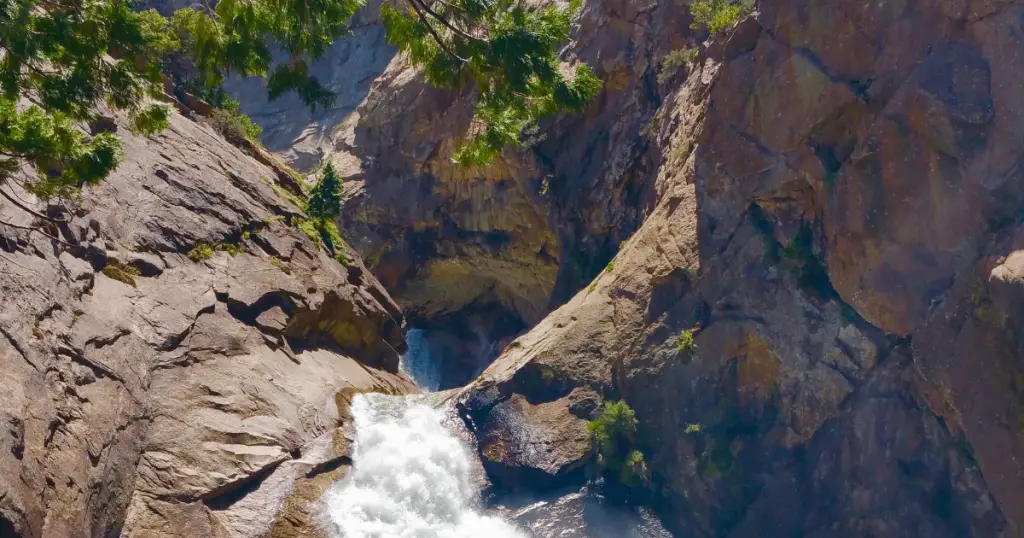
Best Times to Visit Kings Canyon Waterfall
Kings Canyon Waterfall offers a unique spectacle in every season, its grandeur shaping and reshaping with the changing weather. Spring and early summer are considered the best times to visit, as this is when the snowmelt from the Sierra Nevada peaks is at its peak, resulting in an impressively robust flow.
These months also see the park flourish with vibrant wildflowers, providing a colorful backdrop to the thundering falls. In late summer and early fall, the waterfall assumes a gentler disposition, with the flow slowing down.
While the waterfall might not be as powerful, the weather is usually ideal for hiking and camping. As the leaves start to change color, the entire park transforms into a stunning tableau of autumn hues.
Winter visits present a unique spectacle, with the waterfall often freezing into icicles, creating a mesmerizing frosty wonderland. However, accessibility can be challenging due to heavy snowfall and icy conditions on trails.
The park also witnesses a flurry of activities during special events. The annual Kings Canyon Waterfall Festival, typically held in late spring, is a popular event attracting nature lovers and adventurers alike.
Another remarkable natural occurrence is the migratory bird season in late spring, when species like the Western Tanager and the Mountain Chickadee flock to the park.
Therefore, the best time to visit the Kings Canyon Waterfall depends largely on what you hope to experience. Whether it’s the powerful rush of water, a floral bloom, birdwatching, or a winter wonderland, each season offers its unique charm.
Conclusion: Kings Canyon Waterfall
Kings Canyon Waterfall is more than just a stunning natural spectacle. It is a thriving ecosystem, a haven for artists and writers, a paradise for birdwatchers and wildlife enthusiasts, and a site of unparalleled beauty that changes with each season.
The waterfall’s grandeur offers both a serene refuge and an adventurous escape, making it a must-visit destination for nature lovers. Regardless of when you choose to visit, the Kings Canyon Waterfall and its surrounding park hold a promise of an unforgettable experience, inspiring awe and respect for nature’s timeless beauty.

